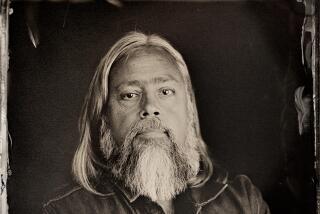‘How to Cook a Tapir’ by Joan Fry; ‘Tide, Feather, Snow’ by Miranda Weiss; ‘Falconer on the Edge’ by Rachel Dickinson.
How to Cook a Tapir
A Memoir of Belize
Joan Fry
University of Nebraska Press: 294 pp., $24.95
Back in 1962, Joan Fry, an English major, was hungry for adventure. She married an anthropologist and followed him to what is now Belize, to a village deep in the rain forest for which nothing in her suburban New Jersey upbringing prepared her. She quickly learned that cooking was a survival skill, and her repertoire grew to include tamales (with or without chicken feet), green corn dumplings, gibnut (something like guinea pig) gumbo and homemade beer, or chicha (using corn and fermented sugar cane juice).
Fry taught English to the local kids, who spoke Mayan dialects -- Kekchi and Mopan. She developed a more intimate understanding of their way of life than her husband did. Fry grew up and out of her marriage (on her 21st birthday, she walked 20 miles for company because he was in the field). By the time she returned to his academic life in Ann Arbor, Mich., Fry was better suited for the independence she had found in the rain forest. A mature voice, almost 50 years later, marvels at her younger self.
Tide, Feather, Snow
A Life in Alaska
Miranda Weiss
Collins: 278 pp., $24.99
“Mine was a landlocked childhood,” writes Miranda Weiss of her Maryland upbringing, collecting possible explanations for her move to Homer, Alaska, land of extremes. Perhaps it was the grandfather in Britain’s Royal Navy. Perhaps it was the boyfriend, a capable ornithologist: “I fell for men who knew how to say nothing as the full moon rose over the piñons, knew how to recognize the butterscotch scent of Pon- derosa pines, and how to enjoy a life of hard work.”
Everything about her new life is unfamiliar -- the small-town relationships, the importance of self-sufficiency. Willingness and careful observation get Weiss through four years in Alaska but not through the relationship that brought her there. She learns how to fish and dig clams and make rhubarb butter and pesto from stinging nettle. She is frustrated and enlightened by her inability to really know the place: “At one moment it felt like your own. But then the tide flipped, the high pressure broke. . . . Within hours, the impressions our boots had left on the sand would be covered by water; there would be no evidence we had been there at all.”
One of the fine things about Weiss is her honesty. She does not try to make the reader like her. She is not the hero of her story.
Falconer on the Edge
A Man, His Birds, and the Vanishing Landscape of the American West
Rachel Dickinson
Houghton Mifflin Harcourt: 240 pp., $24
Rachel Dickinson had her reasons for plumbing the depths of falconry. This was the world her new husband disappeared into in the wee hours of so many mornings, not to mention the watchful eyes of the peregrine falcon he brought home. Dickinson gives the 3,500-year history of the sport, from the Mongols to the Persians to the Arabs and the British. It doesn’t take her long to hear about Steve Chindgren, a man truly obsessed. Through Chindgren, she sees the effect of habitat loss from mining, agriculture, oil and gas on the sage grouse, the falcon’s prey. She also sees just how close this sport can bring its practitioners to another species: “To watch a falconer fly his bird is akin to watching time collapse.”
More to Read
The biggest entertainment stories
Get our big stories about Hollywood, film, television, music, arts, culture and more right in your inbox as soon as they publish.
You may occasionally receive promotional content from the Los Angeles Times.










